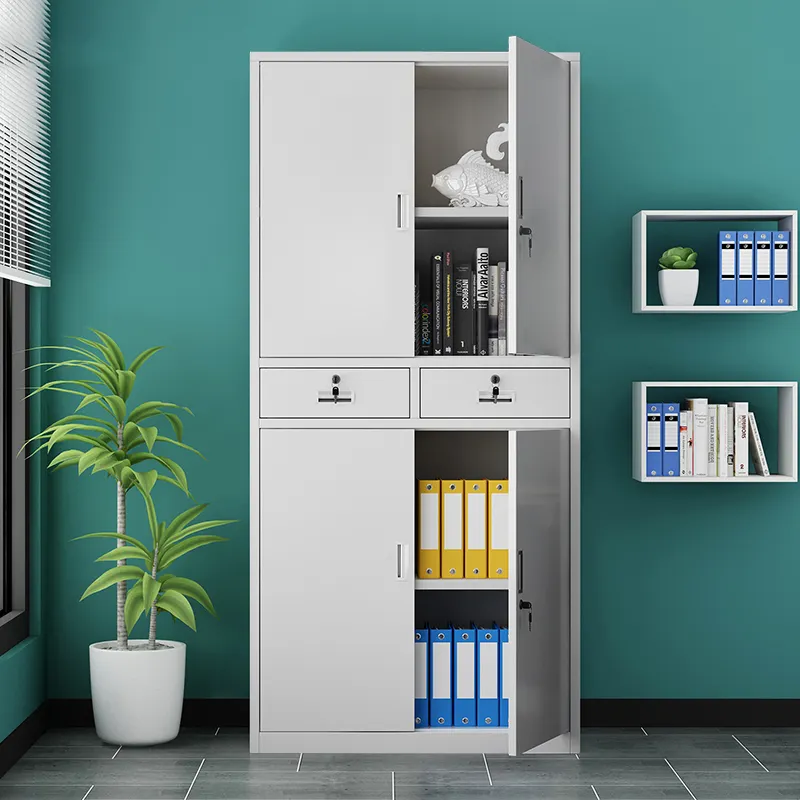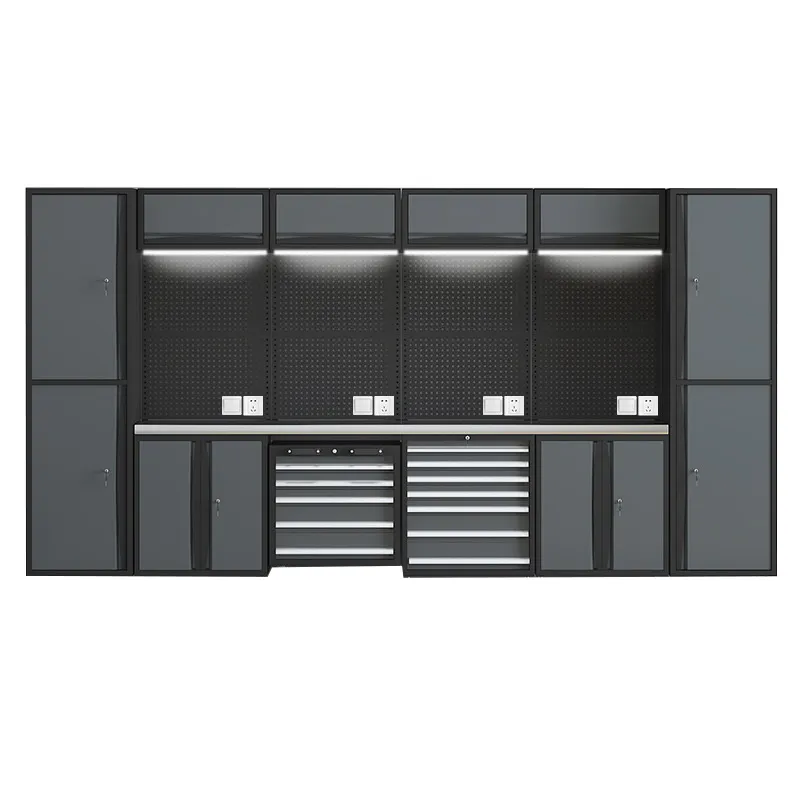Essential Storage Solutions for Limited Office Spaces
Creating an efficient workspace in a small office environment requires careful consideration of every square foot. Filing cabinets for small offices play a crucial role in maintaining organization while maximizing limited space. The right storage solution can transform a cramped office into a productive workspace, enabling smooth operations and easy access to important documents.
Modern businesses, despite the digital transformation, still require physical document storage. Selecting appropriate filing cabinets ensures compliance with document retention policies while maintaining a clutter-free environment. Understanding the key factors that influence this decision can significantly impact your office's functionality and aesthetic appeal.
Space-Efficient Design Features
Vertical Storage Solutions
Vertical filing cabinets maximize floor-to-ceiling space utilization, making them ideal for small offices. These units typically range from two to five drawers, offering substantial storage capacity while maintaining a minimal footprint. The vertical design allows for efficient organization of folders and documents, with easy-to-access drawers that can hold hundreds of files.
Modern vertical filing cabinets often include features like drawer blocks and anti-tilt mechanisms, ensuring safety in compact spaces. Some models also offer customizable drawer depths, allowing you to store various document sizes while maintaining a streamlined appearance.
Lateral Filing Options
Lateral filing cabinets provide an alternative solution for offices with wider wall spaces but limited depth. These cabinets feature a broader design that accommodates side-to-side filing, allowing for multiple rows of documents within each drawer. The wider surface area also serves as additional workspace, perfect for placing printers or other office equipment.
Many lateral cabinets come with adjustable hanging rails, enabling both letter and legal-size filing options. This versatility makes them particularly valuable in small offices where adaptability is essential.

Material and Construction Considerations
Durability and Longevity
When investing in filing cabinets for small offices, material quality directly impacts longevity and performance. Steel construction offers superior durability and fire resistance, while reinforced drawer slides prevent sagging under heavy loads. High-grade materials ensure smooth operation even with daily use, reducing maintenance needs and replacement costs.
Look for cabinets with powder-coated finishes that resist scratches and maintain their appearance over time. Quality construction extends to the drawer mechanisms, with precision ball-bearing slides providing reliable operation and preventing drawer misalignment.
Modern Material Innovations
Contemporary filing cabinets often incorporate innovative materials that combine strength with lighter weight. Aluminum alloys and high-density composites offer excellent durability while being easier to move and rearrange as office needs change. These materials also contribute to better sustainability profiles, an increasingly important consideration for modern businesses.
Some manufacturers now offer eco-friendly options using recycled materials without compromising structural integrity. These choices align with green office initiatives while maintaining professional standards.
Security and Accessibility Features
Advanced Locking Systems
Security remains paramount when selecting filing cabinets for small offices, especially when storing sensitive documents. Modern locking mechanisms range from traditional key locks to electronic systems with programmable access codes. Central locking systems allow simultaneous securing of all drawers, streamlining end-of-day procedures.
Digital security features may include audit trails and multiple access levels, providing enhanced control over document access. These advanced systems integrate seamlessly with office security protocols while maintaining quick access for authorized personnel.
Ergonomic Access Design
Accessibility features significantly impact daily efficiency in small office environments. Full-extension drawers provide complete access to stored materials, while soft-close mechanisms prevent slamming and reduce noise. Handle designs should facilitate easy opening even when drawers are fully loaded.
Consider cabinets with label holders and clear filing systems to maintain organization. Some models include drawer dividers and adjustable rails, allowing customization based on specific filing needs.
Style and Office Integration
Aesthetic Compatibility
Filing cabinets for small offices should complement existing décor while maintaining functionality. Modern designs offer various finish options, from classic neutrals to contemporary colors that can enhance office aesthetics. Consider how cabinet style affects the overall atmosphere and professional image of your workspace.
Surface textures and hardware finishes can significantly impact visual integration. Many manufacturers offer coordinated office furniture lines, ensuring consistent design throughout the space.
Modular and Expandable Options
Selecting filing cabinets that accommodate future growth helps maximize long-term value. Modular systems allow for expansion and reconfiguration as needs change, while maintaining a cohesive appearance. Some designs include stackable components or connecting hardware for creating custom storage solutions.
Consider units that can be easily integrated with desk systems or other office furniture, creating efficient workstations that optimize available space.
Frequently Asked Questions
How much clearance space do filing cabinets need?
Filing cabinets for small offices typically require at least 24 inches of clearance in front for drawer operation. Additionally, consider 2-3 inches of space on either side for ease of access and proper ventilation. Vertical cabinets may need up to 30 inches of drawer clearance for full extension.
What is the optimal drawer capacity for small office filing cabinets?
Most standard filing cabinet drawers can hold between 25-30 pounds of documents safely. For small offices, choosing cabinets with 2-3 drawers usually provides sufficient storage while maintaining space efficiency. Consider load-bearing capacity when selecting units for extensive document storage.
How can filing cabinets enhance small office organization?
Filing cabinets contribute to office organization through systematic document storage, reducing desktop clutter, and providing secure storage for confidential materials. They help establish clear filing systems, improve document retrieval efficiency, and maintain professional standards in limited spaces.

